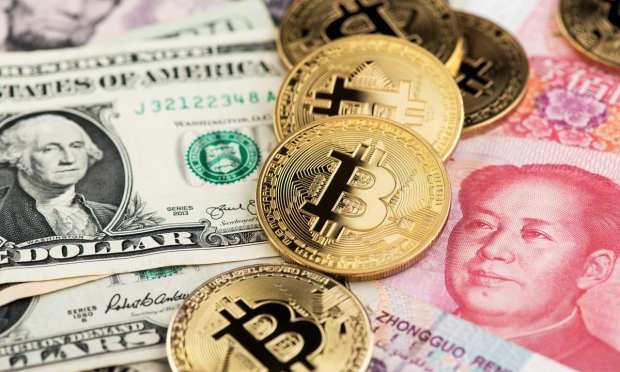China’s Bitcoin Mining Crackdown Skews Crypto’s Basic Supply-Demand Economics

Supply and demand is the cornerstone of economics.
No matter the good or the service, where there is a scarcity of supply amid strong demand, there are higher prices.
It should follow, then, that scarcity of bitcoin due to China’s crackdown on more than half of the world’s supply should be driving prices higher. But then again, there’s another type of scarcity that hints at, well, extinction.
Over the past few days, we’ve witnessed what feels like an almost coordinated crackdown on cryptos, where China stands out, of course, as Yahoo Finance reported earlier this week that a number of crypto miners have stopped at least part (and in some cases all) of their China-based mining operations. The stoppage comes in the wake of a crackdown by the government on the actual production of these digital holdings.
The ripple effects, of course, are significant. China accounts for roughly 70 percent of the global creation of cryptos (bitcoin is but the marquee name in the space, of course). It’s a high-tech version, we would say, of plugging an oil well.
The simple logic would be: scarcity value should drive up the price of bitcoin and its brethren. And, indeed, bitcoin is trading at about $37,500 as of this writing, up from the sub-$35,000 levels seen when the crackdown was announced.
But, using bitcoin as a proxy for the space, the most recent quotes stand well below recent highs of about $63,000 this year. At issue is whether bitcoin and other cryptos will continue to make the inroads that they would, otherwise, into mainstream use, and particularly, consumer-focused commerce.
As Fortune reported, Vice Premier Liu He called for a “severe” crackdown on and punishment of “illegal securities activities,” including crypto mining. The goal has been to eliminate the risks to the financial system.
Miners Go Dark
Shuttering the miners comes on the heels of efforts to shut off financial institutions’ (FIs) ability to provide crypto-related services. As reported, a joint statement from China Internet Finance Association, China Banking Association and China Payment and Clearing Association said that: “Financial institutions, payment institutions and other member units must earnestly strengthen their social responsibilities. They must not use virtual currency to price products and services, underwrite insurance businesses related to virtual currencies or include virtual currencies in the scope of insurance liability, and must not directly or indirectly provide customers with other services.
The services that are being outlawed include: providing customers with virtual currency registration, trading, clearing, settlement and other services; accepting virtual currency or using virtual currency as a payment and settlement tool. And it is this last bit of information that might be a roadblock to the demand part of the equation. Let’s say a sizable chunk of the Chinese-based production goes dark, and does not return — and does not get taken up by other, more-mining-friendly regions.
That constrained supply still will be constrained in an environment where we still don’t know how far-reaching the acceptance of cryptos may be, or whether acceptance will be spotty, here and there, finding safe haven in one country and not another. Hardly the stuff that represents a seismic disruption to the central banking model, at large. China, as we’ve seen, is coming down hard on the space, in essence stamping out the ability to find the coins in the first place.
The U.S. is getting tougher on bitcoin in terms of tax and reporting policy (transfers over $10,000 of cryptos are going to have to be reported to the IRS).
For cryptos, then, the supply picture is uncertain — and so is the demand.
